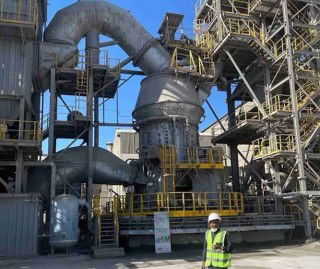2016 was a tough year for the Malaysia cement sector: demand fell, capacity increased and prices suffered as a consequence. Nevertheless, there was optimistic news this week that LafargeHolcim is expecting higher earnings from its operations in Malaysia in FY17 and FY18, as a result of its direct collaboration with the federal government’s projects. And earlier in March, ICR reported that Cementir also saw its revenues from Malaysia pick up.
ICR surveys the industry...
Demand in Malaysia reached an estimated 21.97Mt in 2015, but fell sharply in 2016 following a challenging year. While the overall economy grew modestly in 2016, the construction sector suffered: housing starts fell by 10.3 per cent to 90,696 units in 1H16 and this decline in residential was not offset by public works investment.
The poor demand was reflected in the financial performance of the market leader, Lafarge Malaysia Bhd, which reported a 11.1 per cent drop in volumes over 9M16, even though prices fell by over 9 per cent over the same period, as oversupply tipped the industry into a price war. Cahya Mata Sarawak Bhd (CMS) recorded 3Q16 profits up 10 per cent, but also had to contend with lower volumes.
Following the completion of the merger between Holcim (Malaysia) Sdn Bhd and Lafarge Malaysia Bhd, the Malaysian cement sector consists of seven cement producers and controlling a capacity of 40Mta. Cement production shrank by from 22.35Mt in 2015 to 20Mt in 2016, according to the Bank Negara Malaysia, implying low utilisation rates of around 50 per cent.
An expanding production base
The past year has seen Malaysia's cement production base expand. Lafarge Malaysia was one of the producers to add new capacity during 2016 with 1.3Mta of capacity coming on-stream at its Kanthan plant and 0.2Mta at its Rawang facility. The LafargeHolcim entity runs three integrated plants and two grinding units in the country with a total cement capacity of 14.58Mta, making it double the size of its nearest rival YTL Cement Bhd.
Hume Cement has been playing catch-up with existing producers in the capacity stakes, having started the commissioning of its second line. The project is expected to be complete by the end of June 2017 and will enable the company to penetrate further into the domestic market. The new 5000tpd kiln, supplied by Tianjin Cement Industry and Design Research Institute (Sinoma), will double the company’s cement capacity to 3.6Mta.
CMS Cement commissioned a new grinding unit at Mambong, Sarawak, raising its total cement capacity to 2.75Mta - more than enough to cover local demand of about 1.7Mta. The company supplies cement large infrastructure projects such as the Baleh Dam and Pan Borneo Highway project.
Meanwhile, YTL Cement Bhd took its total cement capacity up to 7.9Mta in 2016 with the commissioning of its greenfield 1.8Mta integrated plant in Padang.
New entrant to add further capacity
If the oversupply of cement was not affecting producers quite hard enough, a new company called ASN Cement Sdn Bhd plans to construct a 3.4Mta integrated plant in Kelantan. John Edwin Reeve, CEO of ASN Cement and former general manager at Cement Australia Ltd, heads up the board of directors. The plant will have a 10,000tpd kiln and will feature VRMs for raw milling and cement grinding.
Little potential for export growth
Domestic producers may well seek additional profits from exports in 2017, but with growing capacities in the region, Malaysian producers have struggled to export much more than 1Mt of cement in recent years.
The trend for imports is expected to slow, but other oversupply countries in the region such as China, Indonesia, South Korea and Vietnam will aim to sell some product in Malaysia.

Hima Cement emerges as leading contender to acquire Khayah Cement
Hima Cement , the East African producer owned by Uganda’s Sarrai Group, has emerged as the lead...